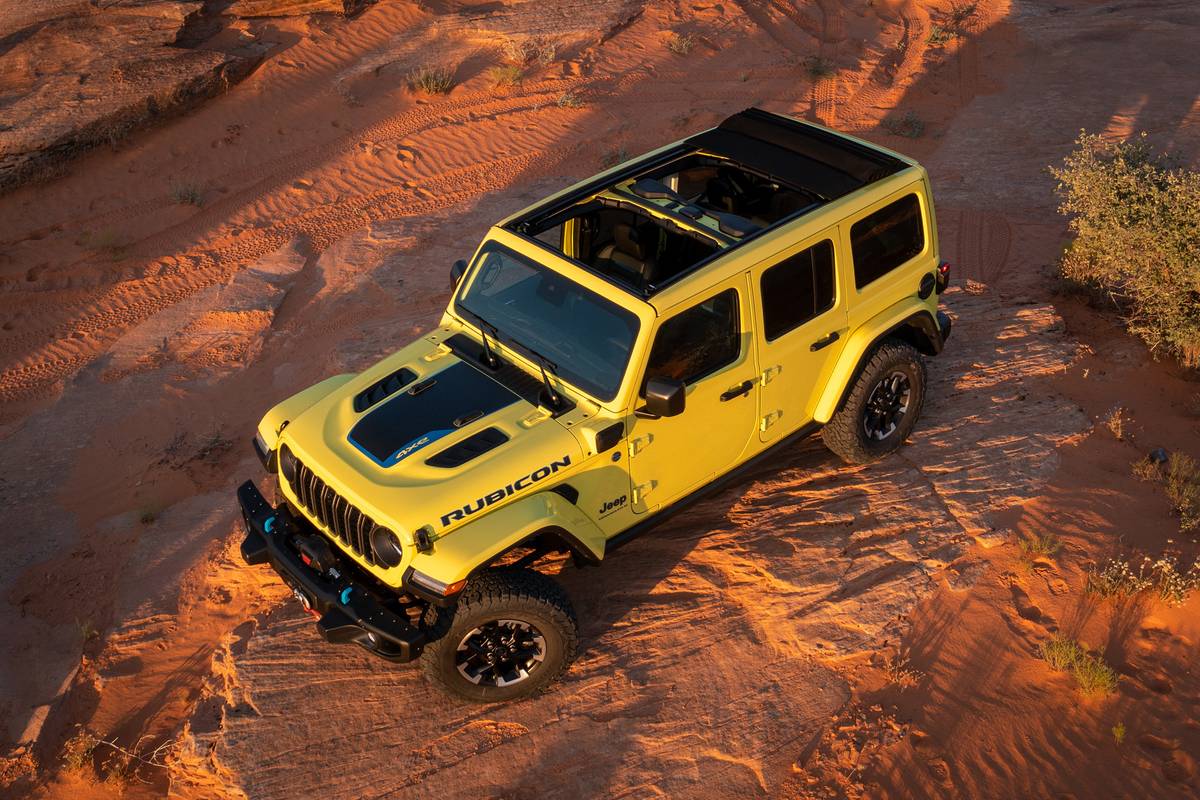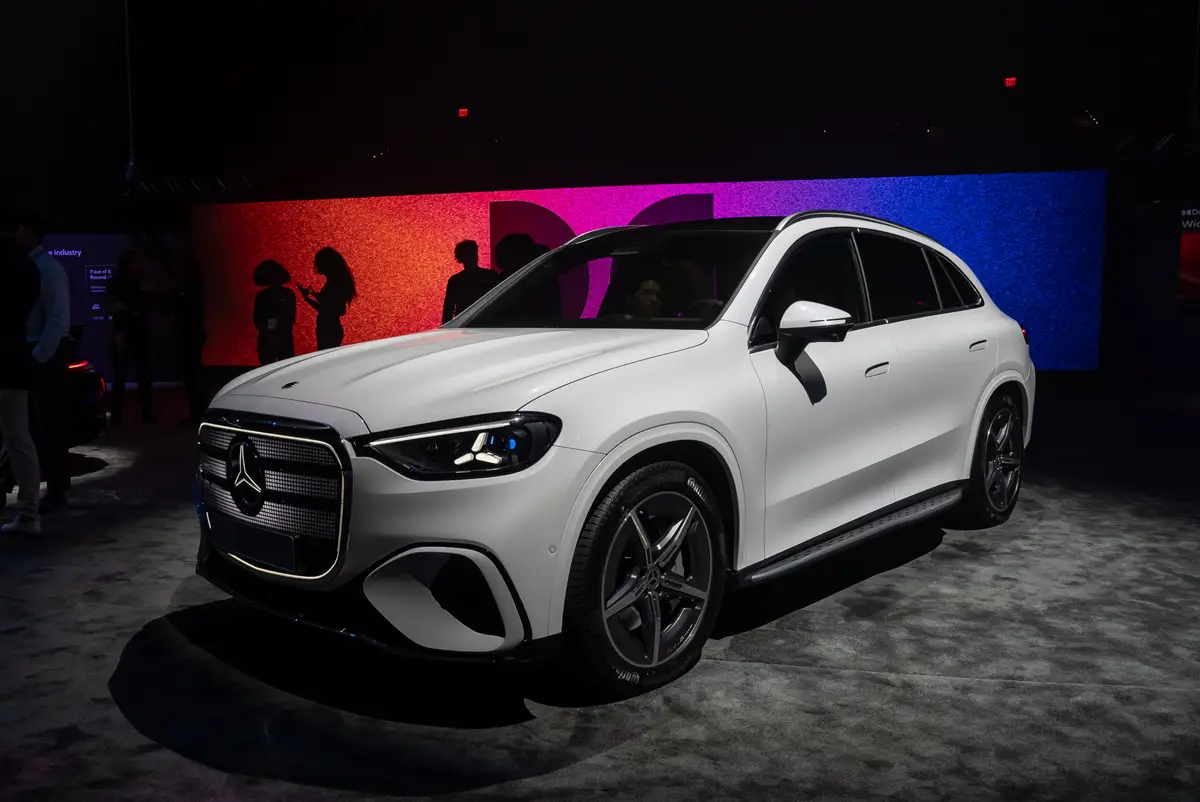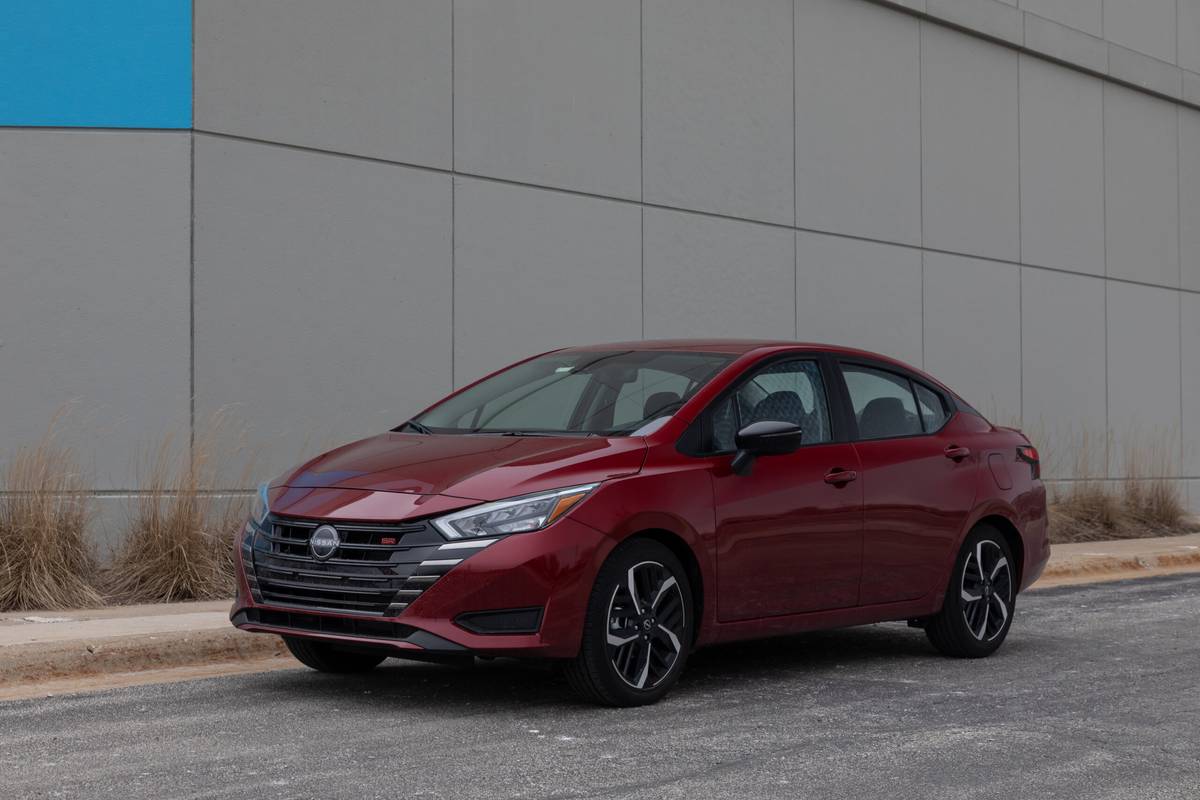PickupTrucks.com's view
Since its debut in late 2003, the Nissan Titan has struggled on several fronts in the battle for the hearts, minds, and wallets of full size truck buyers – especially in three key areas.
First, at Job One Nissan lacked a track record as a full size truck manufacturer with traditional truck buyers – a group fiercely loyal to the pickups they purchase and skeptical about anything new until it’s been proven in the field, typically over years. Second, even though J.D. Power and AutoPacific have both awarded the Titan with the highest owner satisfaction rankings amongst full size pickups, early quality issues were flagged around the truck’s interior fitment and rear axle and brake durability, which reinforced the concerns of traditionalists and limited market penetration with this group. But third, and probably most important, Nissan hasn’t offered a deep, broad range of models to appeal to the wide spectrum of potential customers in the segment.
Missing a large variety of cab, bed, wheelbase, and engine options wasn’t an issue initially, because the Titan aimed for the half-ton sweet spot – high profit, V8 powered extended and crew cabs short boxes – plus it reduced manufacturing complexity. Even when actual sales numbers hit just below the pre-launch annual target of 100,000 units, Titan King Cab and Crew Cab brought in enough revenues so Nissan could avoid using heavy incentives to goose sales.
But the full size truck market began to change dramatically last year, after home sales and residential construction slowed and fuel prices started to rise. For Titan, this meant a 16.7% decline in sales from 86,945 units in 2005 to 72,192 units in 2006, as non-core truck buyers began to lose interest in purchasing a fuel hungry four-door 1500 class pickup while true truckers decided to hold onto their current rigs longer or bought different models not offered by Nissan. Even market leader Ford Motor Company couldn’t escape this shift. Ford saw sales of its number one selling F-Series pickups fall by 11.7% last year, from 2005’s record setting levels.
Adding to Titan’s challenges, this year as economic sales pressures have continued to grow so has the competition.
Toyota finally began sales of a credible full size pickup with its all-new 2007 Tundra. The Tundra is another option for consumers looking to purchase a full size import, but like the domestics it comes in a slew of configurations – with three different engines and three cab types. Through May 2007 Titan sales were off 14.9% from the same period last year while Tundra volume more than doubled.
Nissan is keenly aware that if it wants to once again grow Titan sales volumes, it has to increase the truck’s capabilities and cater to the needs of more than just top-end buyers. As fewer non-traditional buyers enter the segment, the Titan is going to have to increase its appeal to hard-core and commercial truck shoppers.
“We feel it’s very important for the Titan to be perceived not only as a private use vehicle, but also as a work use vehicle,” says Paul Fisher, Titan’s product planning manager.
So Nissan is giving the Titan an extensive upgrade for the 2008 model year that includes two new long bed models, a new 4×4 package, a variety of mechanical upgrades, improved payload capacity, and a freshened interior and exterior.
King Cab and Crew Cab Long Wheelbase Models
The most visible change is the addition of two new long wheelbase models. Titan King Cab (i.e. extended cab) is now available with an 8-foot 2-inch cargo box instead of just the standard 6-foot 6-inch box, while Titan Crew Cab can be ordered with a segment-leading 7-foot 3-inch bed versus the standard 5-foot 6-inch payload bay. Both the King and Crew Cab long beds ride on a common 159.5-inch wheelbase.
Fisher explained the market differentiation between the two extended wheelbase models.
“The King Cab’s 8-foot bed is really for people who need to haul 4×8 sheets of plywood or for guys who want to put a big toolbox behind the cab and still have 6-feet of bed left in back. It’s a very work oriented truck,” says Fisher, emphasizing Titan’s new market push into E-grade territory.
But current Titan buyers who like to play with their trucks and toys also benefit, describes Fisher. “The Crew Cab long bed is a newer animal in the segment. What we found when we launched the Crew Cab short bed in 2004 was that people really loved the utility of the cab but needed a little more space in the bed. So, with our Crew Cab long bed we’ve got 7-feet of space now, which will fit around 85% of the motorcycles out there on the market. Now you can put a bike in the back of the truck and shut and lock the tailgate and you’ve got ultimate security for your very valuable possession.”
We briefly drove a new Crew Cab long bed 4×4 between the deep farm country of Wisconsin and Minnesota’s twin cities.
Independent of make, long wheelbase trucks typically look off in their proportions, because when you drop a seven or eight foot box on the back it unavoidably skews the symmetry of a pickup’s three box architecture. But the Titan Crew Cab’s four full size doors help balance out the extra bed length and almost mute thoughts that the exterior designers used the silly putty filter in the CAD software before hitting the production button. It strikes an altogether different character from the LWB King Cab. Well rounded, not strictly commercial.
There’s a side benefit from the Titan’s extra inches too. Unloaded on the highway, this super lengthy hauler has better on-road manners than the short wheelbase truck. Its longer chassis effortlessly smoothed out buffeting and absorbed chop from rough road surfaces and expansion joints at 65 to 75 mph. The better ride and handling also means less driver fatigue during long trips and easier towing. And even though it’s longer and heavier, the 317-horsepower / 385 lb-feet 5.7-liter Endurance V8 had little trouble motivating and powering the LWB Titan.
If you want to haul a load behind the cab, Nissan has raised the ’08 Titan’s payload capacity ratings by 500-pounds, to 2,062-pounds for Crew Cab and 2,012-pounds for King Cab. Changes were made to the rear axle and suspension to accommodate one ton of cargo. The rear axle has been beefed up with a larger diameter shaft and upgraded leaf spring seats and brackets. Rear leaf spring rates have also been changed to provide better damping. The rear suspension also receives stronger upper and lower shock brackets.
Max towing is unchanged from 2007 – 9,500-pounds for a properly equipped King Cab 4×2 with the short box – but on long box it’s ok now to use a gooseneck hitch mounted in the bed to pull trailers too large to tow with a typical receiver-mounted trailer ball. The upper towing limit for a long box is marginally less than the small wheelbase configuration – 9,400-pounds in a King Cab 4×2.
Forget the Titan’s old brakes, which were too small, suffered from premature wear, and caused huge warranty headaches for Nissan. Front rotor size has been increased from 12.6 x 1.0-inches to 13.8 x 1.2-inches and is now only a bit smaller than the Tundra’s segment leading 13.9 x 1.26-inch rotors. But Titan’s forward brake platters have 80 square-inches more swept area for the brake pads to scrub off speed because Tundra uses a larger center hub for its front wheels.
Fuel economy hasn’t changed but Nissan makes up for this with a supertanker size gas reservoir if you buy the long wheelbase model. With a 37 gallon capacity, Nissan claims a multi-state cruise range of over 600-miles unloaded and well over 200-miles when trailering a full load. Still, EPA ratings of 12-city/17-highway for the 5.6-liter Endurance V8 lag the new Chevrolet Silverado’s 14/19 score for the 5.3-liter Vortec V8 but are slightly better than 12/16 numbers received by the 5.4-liter Triton V8 found under the Ford F-150’s hood.
Nissan engineers tell us that fuel economy will be boosted for 2009 when Titan adopts a new torque lockup strategy. We’re expecting this to be accomplished through a new, more efficient multi-function torque converter for the truck’s standard 5-speed automatic transmission that will disengage from the driveline when idling at a stop and use a lockup clutch to quickly match engine and transmission speeds during acceleration. This should provide the Titan with a 1 to 2-mpg bump driving around town. Think of it as taking some of a manual transmission’s inherent fuel economy advantages and applying them to an auto gearbox.
Future Engine Choices?
If you’re wondering about a diesel engine, Nissan was quiet about offering an oil burner except to say it continues to remain under study. Automotive News, however, reports it’s a done deal and V8 diesels will be purchased from International – the same company that supplies Ford with Power Stroke engines for its three-quarter and one-ton heavy duty trucks.
Borrowing the V6 from the Nissan Frontier for use in the Titan is also under study. Paul Fisher says, “We’re looking at using the V6 very seriously, but we can only put it in a King Cab short bed 4×2. It would probably be overmatched if it were used in the Crew Cab, a 4×4, or a long bed configuration. When our competitors use a V6, they’re very prominent in their regular cabs,” a configuration Nissan is still lacking.
But if it’s lacking in powertrain options, Nissan tries to compensate with added off-road capability for the 2008 Titan with the new PRO-4X trim package.
PRO-4X Off Road Model
“The PRO-4X is our sporty off road truck in the lineup. We’re very excited about it. It retains all of the previous equipment that the off-road package had – locking diff, Rancho shocks, very large tires [P275/70R18 BFGoodrich Rugged Trails] – and adds to it a special front end appearance with body colored front and rear bumpers and a beautiful interior that includes white gauges and a metallic feel inside the truck,” says Fisher.
The PRO-4X also has 18-inch wheels, two extra skid plates, a lower 3.36:1 final gear ratio, and GKN’s Electronic Differential Lock (EDL) – the only full size pickup with an optional electric rear diff locker.
We took a King Cab PRO-4X off road at Apple Valley Farms near Sand Creek, Wisconsin. The park’s tight paths run through deep thickets of trees and open tracts of farmland, and up and down rolling hills. They’re surfaced with fine brown sand that has the consistency of talc and billows into large dust clouds when disturbed by tires or wind. Sandstone punctuates its deeply rutted trails on top of and under the sand, making for constantly changing traction conditions.
Titan’s the truck for off-road enthusiasts. In stock form, the PRO-4X is an excellent ground pounder with performance that we’d place near or at the top of half-ton pickups. It exhibited better trail manners than the Double Cab Toyota Tundra TRD 4×4 we drove recently at Hollister Hills in Northern California. Body control was excellent with little jounce transferred from the specially tuned suspension into the cabin to toss the driver and passengers around as we climbed into and out of channels carved in the trails. The sightlines are better too over the truck’s nose. In general the Titan just drives smaller than the Tundra off road.
It’s wide on the trails though.
Bushes and small trees along the sandy paths quickly pinstriped the truck with all sorts of abstract patterns that traced the trail’s frequently shifting topographical modulation on its sides. The optional tow package’s extendable mirrors didn’t benefit either. Even pulled in they were whacked pretty good twice against branches.
Nissan and Toyota have different philosophical approaches to off roading. Titan lets the driver have more control while Tundra mostly lets a computer decide what’s best.
Nissan doesn’t offer automatic hill descent assist for the Titan, like the nice setup the Tundra has. Instead, in 4-Lo, the transmission is dynamically remapped to provide slower throttle response to help manage the vehicle down steep grades or in tough spots on the trail.
But given a trade-off between having hill descent control or a true locking diff, we’d say Nissan made the better call by continuing to offer the Eaton E-locker, which is activated only at the driver’s discretion to get the pickup out of low traction situations. It’s a brute force, low complexity solution that just plain works.
Tundra foregoes mechanical differentials all together to control slip, instead using the truck’s stability and antilock brake systems to actively manage power distribution and braking independently at each wheel until traction is regained. However, in high or low 4WD, the Tundra’s automatic limited slip diff can’t be turned off by the driver. This can potentially cause issues in extremely low traction environments, like loose mud, when the computer decides to apply the brakes to control wheel spin and unintentionally winds up canceling out driver efforts applying power to keep the truck moving so it won’t get stuck.
If you’re an active off-roader, and you’re not going to raise the vehicle’s ground clearance with an aftermarket suspension, then you’ll want to stick with the PRO-4X short bed configuration, because even though you can get a long bed PRO-4X Titan, the bigger wheelbase has a 2.1-degree shallower breakover angle than the tighter wheelbase.
Improvements Inside and Out
Aside from trailer, payload, and off-road improvements, Nissan has also spruced up the Titan’s interior with better materials and improved seating. Work ready XE trim Titans get vinyl floors for easy cleaning. This actually costs more than carpet but the Titan’s American engineers pushed hard with the home office in Japan to charge less for the option so the truck would appeal more to increasingly important commercial buyers. The old HVAC system is also retained on XE, SE, and PRO-4X models to save dollars for reallocation to improve the truck’s suspension and other functional areas. The upscale LE model gets dual zone climate controls.
Overall there’s a feeling of better quality inside the truck but we still see room for improvement in fit and finish – especially in the interior panel gaps.
There are some other changes on the outside, but they’re cosmetic – revised headlights, new paint schemes, and new wheel choices.
Conclusion
With the 2008 Titan, Nissan is showing pickup truck buyers that it’s learned much since entering the full size market three and a half years ago. It still doesn’t have the same wide range of configurations as GM, Dodge, Ford, and Toyota, but Nissan has fixed the biggest pain points Titan’s original buyers may have experienced and broadened the line just enough with new long wheelbase and off-road models to offer commercial customers another competitive and proven half-ton pickup to shop.
Latest news



